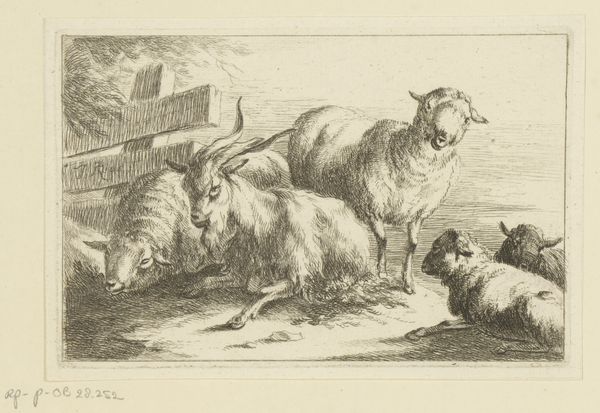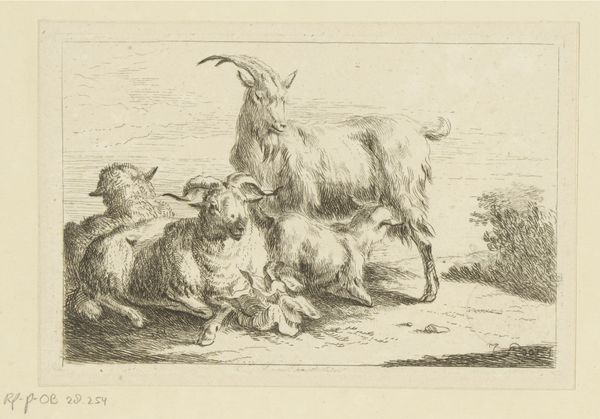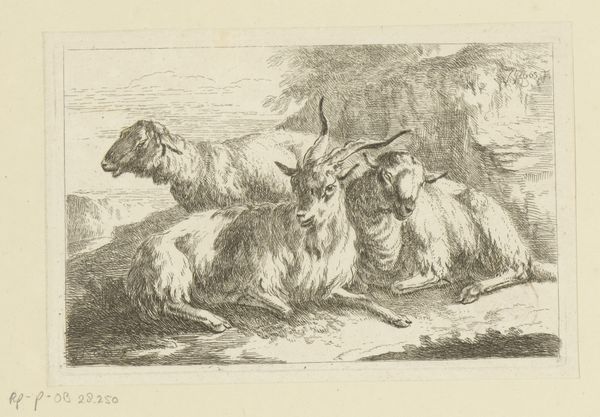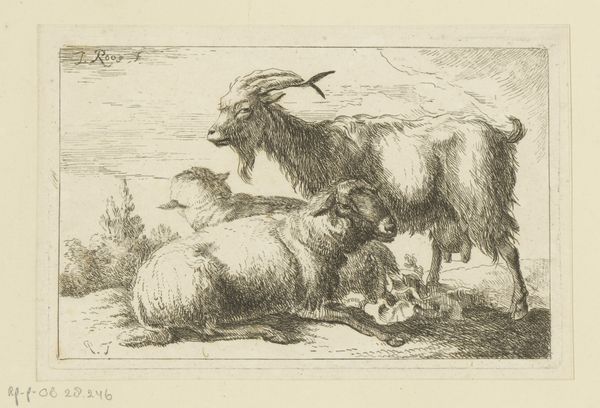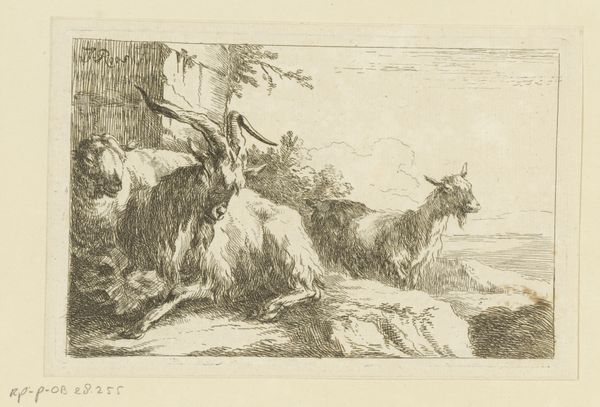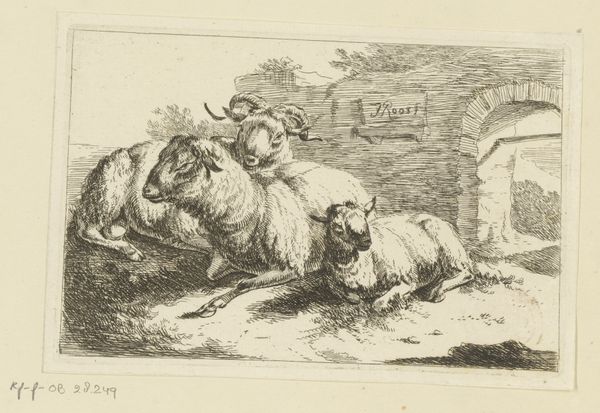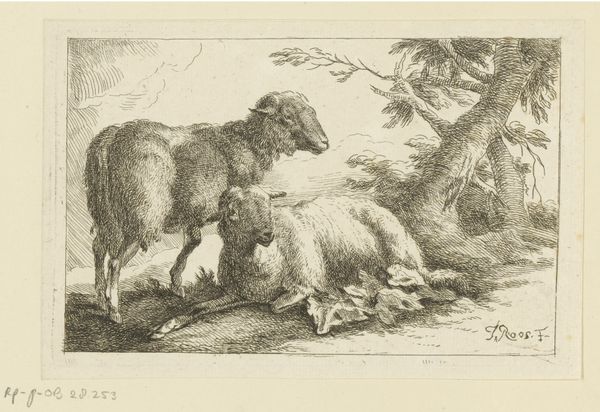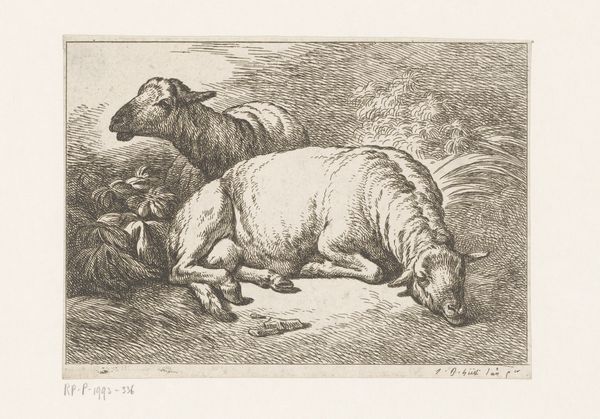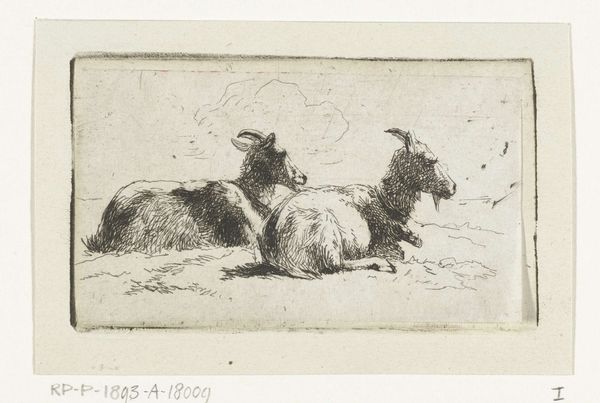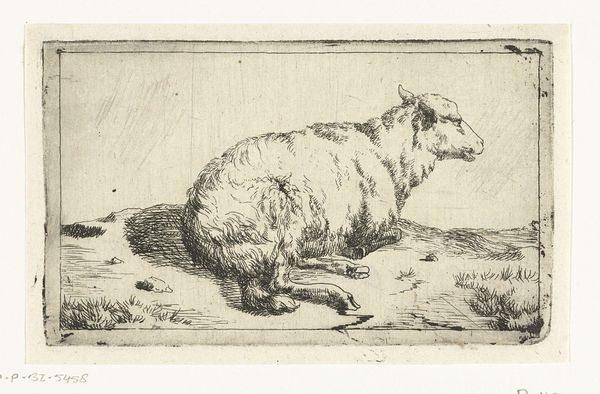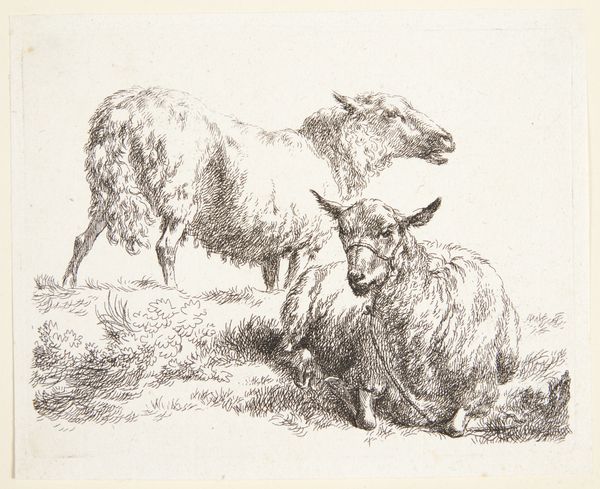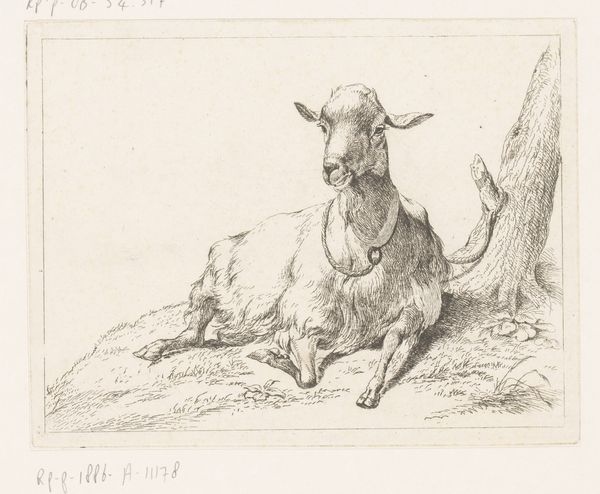
#
pencil drawn
#
amateur sketch
#
light pencil work
#
quirky sketch
#
pencil sketch
#
old engraving style
#
etching
#
personal sketchbook
#
pen-ink sketch
#
pencil work
Dimensions: height 117 mm, width 176 mm
Copyright: Rijks Museum: Open Domain
Curator: Here we have "Goat and Three Sheep" by Joseph Roos, from 1754. It's a delicate etching. Editor: It's remarkably gentle for an image of livestock. There’s a quietness, an almost domestic intimacy in how these animals are grouped. Curator: Considering the likely socio-economic function of sheep at that time, though, that gentleness is interesting, isn't it? The materiality itself – the etching, the paper – points to a certain level of accessibility in reproduction and dissemination. Were these images primarily for the wealthy landowners, or was there a broader market? Editor: Absolutely. The composition gives me pause too. We see the ram’s magnificent horns almost dominating the frame. This portrayal disrupts the simplistic agrarian narratives so common in art from the period. What power structures were at play in the lives of shepherds and their flocks? Were people being dispossessed, pushed into more intensive forms of production at the time of its making? The image prompts questions about social dynamics. Curator: That focus also connects to the actual labor embedded within creating an etching like this. Think about the repetitive, skilled actions to produce it. Did Roos have apprentices? The etcher’s labor matters as much as that of agricultural workers portrayed here. Editor: And if we unpack those implications, the image becomes more politically charged. What does it mean to aestheticize labor or the means of survival without addressing inequalities? Curator: Perhaps that's where the deceptive charm of it lies. These scenes offered an appealing, accessible, romanticized glimpse of an existence still profoundly connected to the means of making a living at a time of emerging industrialization. Editor: You’ve given me much to contemplate. A picture is never just a picture; it’s a portal to power structures, histories of making, and human-animal relations that resonate across time. Curator: Agreed. It really challenges our simplistic view of rural idyll.
Comments
No comments
Be the first to comment and join the conversation on the ultimate creative platform.
